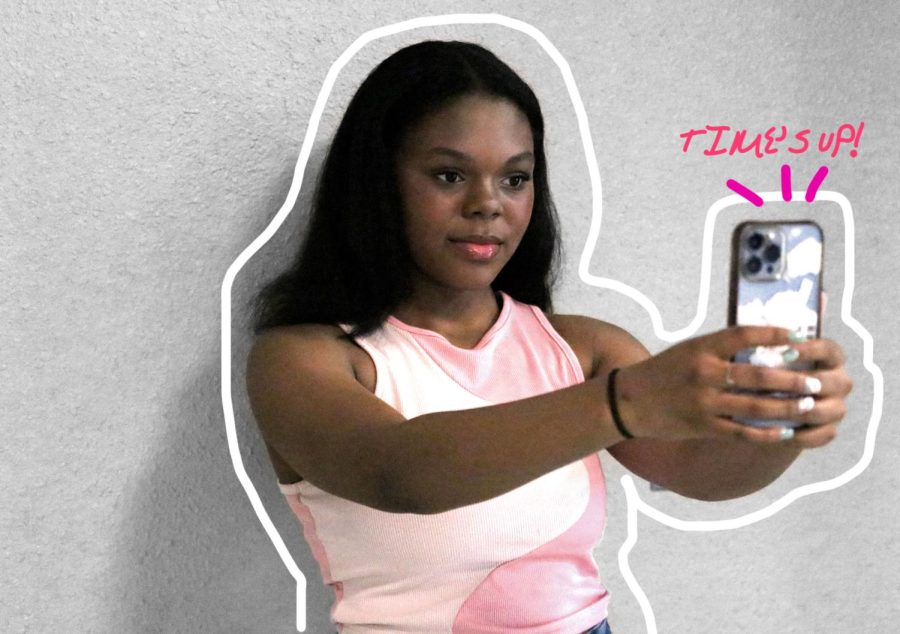Freshman Tristyn Jones recently began keeping her time spent on social media at arm’s length by setting time limits for certain apps to better monitor her mental health.
Setting time limits for certain apps provides beneficial compromise to students
April 18, 2023
Personalizing and limiting social media usage can provide the balance between mental health and staying connected that many students are looking for. While reaching this compromise can be done through a parent setting and strictly enforcing time limits for certain apps, some students have taken this responsibility into their own hands.
For freshman Tristyn Jones, personalizing the social media algorithm so it pushes out more positive content was made possible through setting specific time limits for herself.
“Before, I never liked getting off TikTok or Instagram and feeling bad about myself so I started setting time limits to make sure I wasn’t getting absorbed in this world that I knew was fake,” Jones said. “I tried to just find things that make me happier because after some point of watching so many videos, your whole feed will just be what you want it to be. By setting those time limits I was able to completely revamp my feed into something better than it was before,” Jones said.
Through setting these screen time limits, Jones has found that social media can be used to enhance off-line hobbies.
“I’m starting to get into more hobbies such as reading,” Jones said. “I would search up things on TikTok so I’ll get more things about books instead of about looks.”
Peters recently downloaded Instagram and Snapchat after deleting all social media for her mental health. She is now using it similarly to Jones: a means to enhance her real life hobbies by limiting how much time she spends on the app.
“I’m working to use it as a means of doing things outside of [online],” Peters said. “My Instagram is full of a lot of art recently and I’m trying to make it the kind of art that I might get inspired to do on my own time, so that it can become a way to do things outside of just social media instead of just doom scrolling.”
Similarly, Roberts recently redownloaded Instagram after her break from the app too. Roberts describes the avenues she is taking to keep her social media experience positive this time around.
“I limit my time on there and I just tell myself that Instagram is just a picture; it’s not as important to me,” Roberts said. “Also, [my advice is to] follow people that inspire you. So when you are looking at stuff, it’s not all about people. There are good things on there.”
According to Crandall, these screen time limits are not just another option, they are psychologically beneficial.
“The benefits of setting limits with the amount of screen time are that your brain will be focused to see the word in other lights outside of social media feeds,” Crandall said. “It will create balance in perspective. Staying away from social media altogether allows a person to have full control over their system. They get to decide what information gets into headquarters, your brain and therefore what headquarters is using to construct an understanding of reality.”
This more accurate construction of reality was exactly what Roberts and Peters were looking for when rejoining social media. Looking at the big picture, Peters hopes adults can begin to see social media as a positive space while staying aware of its harmful, underlying features.
“Overall, adults should see social media as a space that can be good and also set a good example for how that can happen so long as they don’t become overly engrossed in it like I did,” Peters said.
